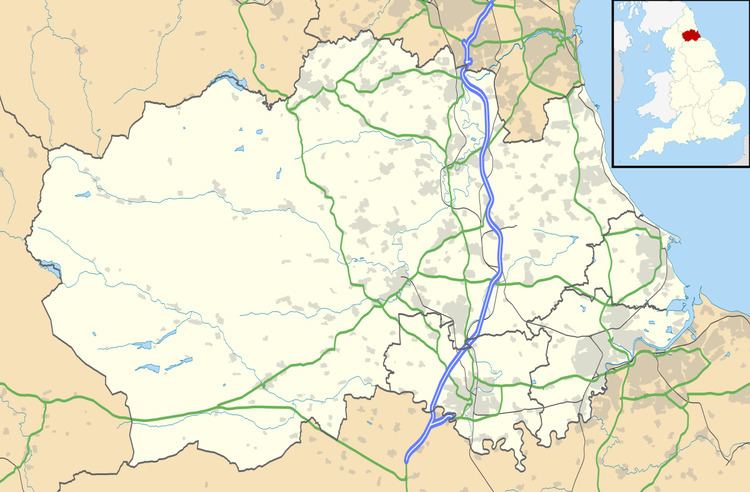OS grid reference NZ369342 Sovereign state United Kingdom Dialling code 01429 | Unitary authority Postcode district TS29 Local time Friday 10:51 PM | |
 | ||
Weather 3°C, Wind SW at 8 km/h, 92% Humidity | ||
Trimdon Grange is a village in County Durham, in England. It is situated ten miles to the west of Hartlepool, and a short distance to the north of Trimdon.
Contents
- Map of Trimdon Grange Trimdon Station UK
- Colliery Disaster
- Trimdon Grange Explosion 1882 song
- Notable people
- References
Map of Trimdon Grange, Trimdon Station, UK
Colliery Disaster
At 14:40 on 16 February 1882 the Trimdon Grange colliery suffered a major explosion causing the deaths of 69 men and boys. The coroner (TW Snagge) reported to both houses of Parliament:
The inquest concluded:
There is no room for doubt that the explosion had its origin in the Pit Narrow Board District, and that it was caused by the diffusion of a sudden "squeeze" or outburst of gas forced, with accompanying dust, towards the working face by a heavy fall of roof over the northern edge of the Pit Narrow Board goaf, and driven out with a velocity which sent the flame through a miner's lamp.
The coroner further observed:
the result of this inquiry is a further proof, if further proof were needed, that the Davy lamp affords no security whatever against the occurrence of grave disasters of a similar kind, and that its employment in dusty mines during long-wall working operations, carried on under conditions of ventilation and roof formation similar to those prevailing in Trimdon Grange Colliery, ought to be absolutely prohibited.
Not all the men were killed by the explosion and fire. After the explosion the burnt methane (firedamp) forms carbon dioxide (then called carbonic acid gas) and carbon monoxide. The resulting mixture is called afterdamp and will suffocate and kill. Indeed, the gas forced its way through a passage into the adjoining Kelloe Pit where six men lost their lives from the afterdamp.
"Trimdon Grange Explosion" (1882 song)
The incident was recounted in the song "Trimdon Grange Explosion" by the local collier-bard Thomas "Tommy" Armstrong. Armstrong performed the song within a few days of the disaster in the local Mechanics' Hall.
The lyrics of the song include an accounting of the events that took place, such as:
Men and boys left home that morningFor to earn their daily breadLittle thought before the eveningThey'd be numbered with the deadThe song also asks the local community to help out in the wake of the incident:
God protect the lonely widowHelp to raise each drooping headBe a Father to the orphansNever let them cry for breadThe song became known outside of Trimdon Grange and has been recorded by other artists, including Martin Carthy, The Mekons and Alan Price.
